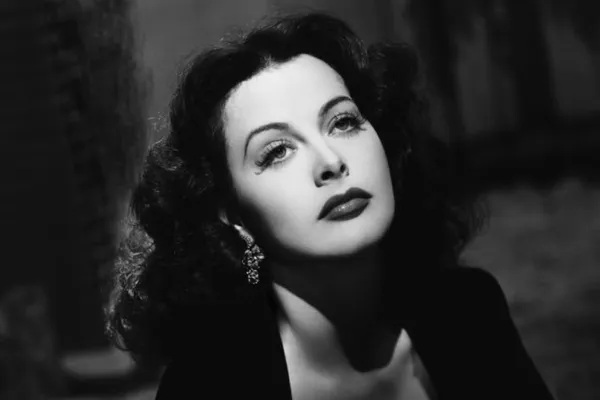 |
| Diane Kruger reads from Lamarr's letters in Alexandra Dean's revelatory documentary Bombshell: The Hedy Lamarr Story |
In the final installment of my conversation with Alexandra Dean, the director of the revelatory documentary Bombshell: The Hedy Lamarr Story, we explore the background of the woman who inspired the looks of Catwoman, as well as Disney's Snow White, Mel Brooks and his Hedley Lamarr character (portrayed by Harvey Korman) in Blazing Saddles, the impact Hedy Lamarr had from the start with a role in Gustav Machatý's 1933 film Ecstasy (Ekstase), and the discovery of the interview tapes done by Fleming Meeks, that allow Hedy herself to guide us through her life.
With interviews (including Peter Bogdanovich, Jeanine Basinger, Robert Osborne, Michael Tilson Thomas, Mel Brooks, and Lamarr's family), expertly edited (by Dean, Penelope Falk and Lindy Jankur), Bombshell: The Hedy Lamarr Story is assembled with care. Her life plays out like an adventure novel overflowing with intrigue. Diane Kruger reads from Lamarr's letters and also gets a chance to remark on the star as herself on-camera. You rarely get both.
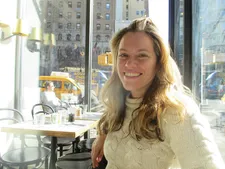 |
| Alexandra Dean on Hedy Lamarr: "It's true, this woman was a kind of a real world Wonder Woman." Photo: Anne-Katrin Titze |
There is plenty to see in the realm of what almost becomes a guilty pleasure - Hedy's looks and style remain irresistible catnip. And why not? The woman who helped to sell war bonds and kissed soldiers at the Hollywood Canteen for the war effort while her patent on secure radio communication was seized, could never be contained.
Anne-Katrin Titze: In your documentary you mention Snow White and Catwoman.
Alexandra Dean: Hedy influenced the look of both. Snow White was being drawn right when Hedy came to Hollywood. And it was actually the look from Ecstasy that they were imitating. Snow White was blond and they made her a brunette.
AKT: Wasn't Marge Champion the model for Snow White? She did all the movements. Together with her husband, she did a lot of dance numbers at MGM, as Marge and Gower Champion.
AD: Is that right?
AKT: Yes, I'm sure she did most of the movements.
AD: How wonderful. I'm sure it's an amalgam. What I heard is that the change from the blond hair to that black hair and the fair skin had to have been Ecstasy. Because Algiers wasn't out yet. But Hedy was already making a huge impact on the world because of Ecstasy. Which is not something I think Disney wanted to go around trumpeting. But the news did get out anyway. And then Catwoman was based on her look entirely, openly. She had already become a defining look of the era.
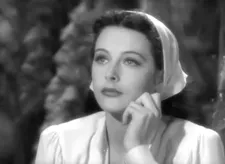 |
| On Hedy Lamarr's connection to Disney: "Snow White was being drawn right when Hedy came to Hollywood." |
AKT: The documentary also touches on how she ended up in Hollywood. From Austria, from an assimilated Jewish household, then her marriage, her escape - her life story sounds like an adventure novel already.
AD: Yeah, if it were fiction, you'd say, tone it down a little bit! Amazingly, it's not fiction. It's true, this woman was a kind of a real world Wonder Woman. She did escape in the middle of the night from an arms dealer husband who was collaborating with the Nazis.
She was Jewish and realised that Hitler knew because he started telling the press that he was banning her films because she was Jewish. And so she decided that she had to get out of there. Actually, it's more complicated than what you see in the film. She tried to escape several times.
AKT: Somebody calls her "the Mata Hari of the Second World War" in your documentary.
AD: It's Bob Price. I mean in a way, that was an insult. Because he was saying that she stole the idea from her husband. Because Mata Hari was a spy. But she was a Mata Hari figure. She was so bold. But the main thing about Hedy is that she didn't have to steal the invention, she came up with it herself.
AKT: Mel Brooks wanted to marry her?
AD: He certainly did.
AKT: How did he get involved in your film? You thought - same sense of humour? Same good looks?
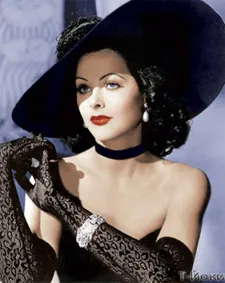 |
| Hedy Lamarr had "already become a defining look of the era." |
AD: I love that man! No, it was because of Hedley. If you see anything posted about Hedy Lamarr, even my film, whatever, on the internet now, you'll find four, five people who will post Hedley and put a picture because of his Blazing Saddles. And Mel Brooks making her name into a joke. And people didn't realise what that was about but it was because she had become a bit of a joke in the culture when she got older. So we asked Mel Brooks to be in the film because I wanted to ask about that.
AKT: That's a very good point.
AD: Yeah, but we ended up not putting it in. He was very sympathetic and he didn't mean to ridicule her at all. It was kind of an accident. He thought it would be funny to name this villain Lamarr because it was associated with this beautiful woman that he'd been in love with. And she did sue him for that. And when she sued him, he understood that it was just because she didn't have any money, it wasn't because she was mad at him. He actually said to his lawyers "Don't sue her back, just give her some money. She needs money. Look after her." So she and Mel stayed close.
AKT: I couldn't detect animosity.
AD: He understood what had happened to her.
AKT: It is painful to look at her near the end of your film when you do show her after plastic surgery which she had in her forties. You just want to see this woman with her exquisite face age naturally.
AD: Normally, yeah. For me the plastic surgery is a double-edged thing. Because it was also her inventive mind, right? Her inventive mind was thinking, I can fix this! And she was pioneering this plastic surgery and telling them what to do. But the problem is when you're a pioneer you make mistakes. She didn't understand that the plastics, the inserts in her face, couldn't be exposed to sun. Now we know that. She loved to bake in the sun and it would melt!
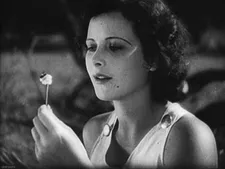 |
| "Hedy was already making a huge impact on the world because of Ecstasy." |
AKT: Oh no!
AD: So what you see is an effect of almost her face melting.
AKT: Oh, my god.
AD: So at first it was very effective.
AKT: You don't go into much depth with this in your film.
AD: No, a little bit. As you can see, I can go into anything. The hard thing about the film was keeping it streamlined - because everything is good.
AKT: Saying that I wanted her to age naturally, in order to be able to see her face, makes me almost feel a little guilty, complicit. Again, it is her looks and not her mind.
AD: Because we're so invested in that face, yeah, it's true. She did lose it. But she didn't lose her mind, that's the wonderful thing. She was aware in '97 that her invention was going to start to be recognised. I think that's why you see that poem in the end where she says even if you felt like the world kicks you in the teeth, do it anyway. Do whatever you're trying to do. Don't do it for the applause. Do it because you are going to change the world. Because she felt that way.
AKT: When you started with the film, how much did you know about her? Who was she in your head? What had you seen her in?
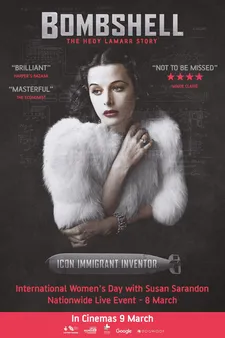 |
| Bombshell: The Hedy Lamarr Story UK poster |
AD: I knew Hedley from Blazing Saddles.
AKT: You hadn't seen Algiers or Ecstasy?
AD: Oh, no. I'd seen Blazing Saddles. And then I figured it all out and fell in love with this character. And then when we found the tapes, it changed everything.
AKT: Those audio tapes were from an interview in the Nineties. Is it correct that you had started the film and didn't know that these tapes existed?
AD: Yes. At six months in we had to hunt for them and call everyone who had ever talked to her and finally we tracked down Fleming Meeks who had interviewed her in 1990 and never played the tapes for anyone. And one of them was, as you see in the film, it was lost behind the trashcan and one is in his cupboard and under the car. They were all over the place because he had moved house three or four times in the 25 years since he'd recorded her.
AKT: And the discovery meant restructuring everything?
AD: It meant throwing away the film we were doing. It was a difficult crossroads for us but it was totally worth it because there she was suddenly, and all of her personality was there! We had to follow the structure she wanted to follow. It was a much more nonlinear film but when she started telling the story, we couldn't tell it the way we had wanted to do. We had to follow her voice and her voice wanted to go linearly.
Read what Alexandra Dean had to say on style and substance in Bombshell: The Hedy Lamarr Story.
On March 8 - International Women's Day Nationwide Live Event with Bombshell: The Hedy Lamarr Story producer Susan Sarandon
Bombshell: The Hedy Lamarr Story is in cinemas in the US and will open in the UK on March 9.





















